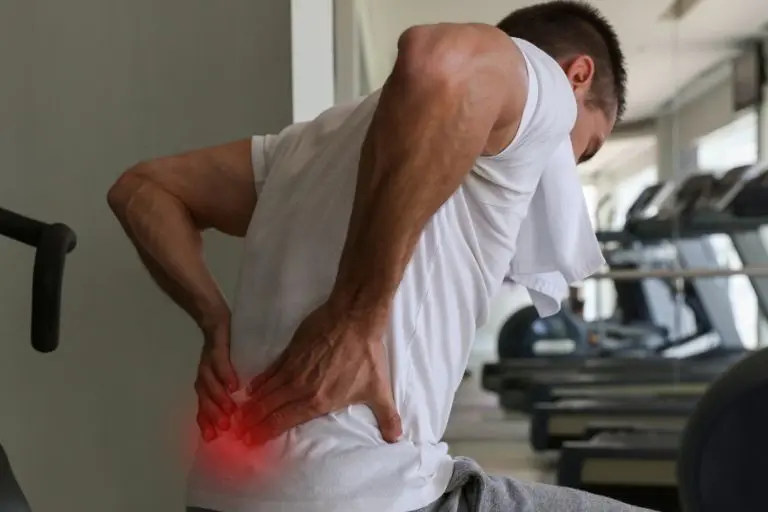Back pain after 40 isn’t a life sentence. In fact, the right kind of movement—specifically, weight training—can be one of your greatest tools to feel better, move better, and stay strong.
Let’s break down exactly how strength training can support spinal health and reduce back pain as we age.
1. Builds Core Strength – Your Natural Back Brace
The core isn’t just your abs—it includes your obliques, lower back, and glutes. These muscles act as a natural brace for your spine, absorbing pressure and reducing strain on your vertebrae during everyday activities.
As we age, these muscles tend to weaken from long hours of sitting, lack of use, or poor posture. Weight training helps activate and strengthen them. Think of exercises like deadlifts, planks, glute bridges, and bird-dogs as key players in your pain-prevention arsenal.
Why it matters: A strong core distributes stress more evenly throughout your body and keeps your spine aligned. Less wobble = less pain.
2. Improves Posture – The Secret to Long-Term Relief
Rounded shoulders, forward head, and a slouched spine aren’t just unattractive—they’re painful. Years of tech use and sedentary living weaken the upper and mid-back, leading to poor alignment.
Weight training helps strengthen the muscles responsible for upright posture—especially the rhomboids, trapezius, and spinal erectors. Rows, reverse flys, and face pulls are excellent for retraining posture.
Why it matters: Better posture means your body moves the way it was designed to, reducing strain on discs, joints, and nerves.
3. Increases Joint Stability – Like Shock Absorbers for Your Spine
Muscles do more than move you—they also protect you. Stronger muscles around your hips, knees, and spine provide stability to your joints. As you age, joint stability becomes crucial in preventing injury and inflammation.
Strength training reinforces the connective tissues (ligaments and tendons) that keep your joints safe. Think of it like reinforcing the bolts and brackets on a bridge.
Why it matters: Stable joints keep your body aligned and absorb more impact—meaning less shock travels to your spine.
4. Enhances Flexibility and Mobility – Yes, Strength Training Can Do That
Contrary to old myths, strength training doesn’t make you stiff. When done with full range of motion, it can actually improve flexibility and joint mobility. Movements like deep squats, lunges, and overhead presses stretch and strengthen at the same time.
That said, intentional stretching also plays a huge role in back pain relief. A simple routine of hamstring, hip flexor, and lower back stretches can release muscle tension that pulls on the spine.
Why it matters: Tight muscles tug on the spine, contributing to pain. Stretching and full-range strength movements improve how your body moves and feels.
5. Boosts Bone Density – A Critical Factor After 40
Starting in our 30s and accelerating in our 40s and 50s, we begin to lose bone mass—especially in the spine and hips. This can lead to osteoporosis and an increased risk of fractures.
Weight training puts controlled stress on your bones, which tells the body to strengthen them. It’s one of the best ways to naturally preserve and build bone density.
Why it matters: Stronger bones mean a sturdier frame and a lower chance of painful fractures or degeneration.
6. Helps with Weight Management – Less Pressure, Less Pain
Extra weight—especially around the midsection—pulls the spine forward and increases pressure on your lower back. Muscle, on the other hand, burns more calories at rest, making it easier to stay lean.
Weight training helps shift body composition by adding lean muscle and reducing fat. Combined with good nutrition, it’s a long-term strategy for staying mobile and reducing pain.
Why it matters: Less pressure on your joints and spine equals less pain—and more energy.
The Role of Stretching: A Missing Piece in Most Programs
If strength training builds the armor, stretching keeps the joints mobile. Think of your muscles like rubber bands. When they’re tight or dry, they snap. When they’re flexible, they support smooth, pain-free movement.
Incorporate dynamic stretching before workouts (leg swings, hip openers, shoulder rolls) and static stretches after (hamstrings, hip flexors, lower back holds).
Why it matters: Stretching relieves muscular tension, improves blood flow, and enhances your strength training results.
The Smart Way to Start (Especially If You Have Back Pain)
- Get cleared by your doctor or physical therapist first.
- Work with a certified trainer who understands back-safe programming.
- Start with bodyweight or resistance bands before progressing to free weights.
- Focus on form first, not weight.
- Include mobility and stretching in your routine.
Final Word: You’re Not Too Old to Lift
Back pain may be common after 40, but it doesn’t have to be permanent. With proper strength training and stretching, you can rebuild your foundation, reduce pain, and regain confidence in your movement.
Weight training isn’t just about building muscle—it’s about building a better, more resilient version of yourself. One rep at a time.
If you’re interested in a personalized plan or back-safe workout guide, reach out—I’m always here to help.
Coach Chris
Certified Health Coach, Personal Trainer, & Nutritionist
Host, The Legion Fitness Show

